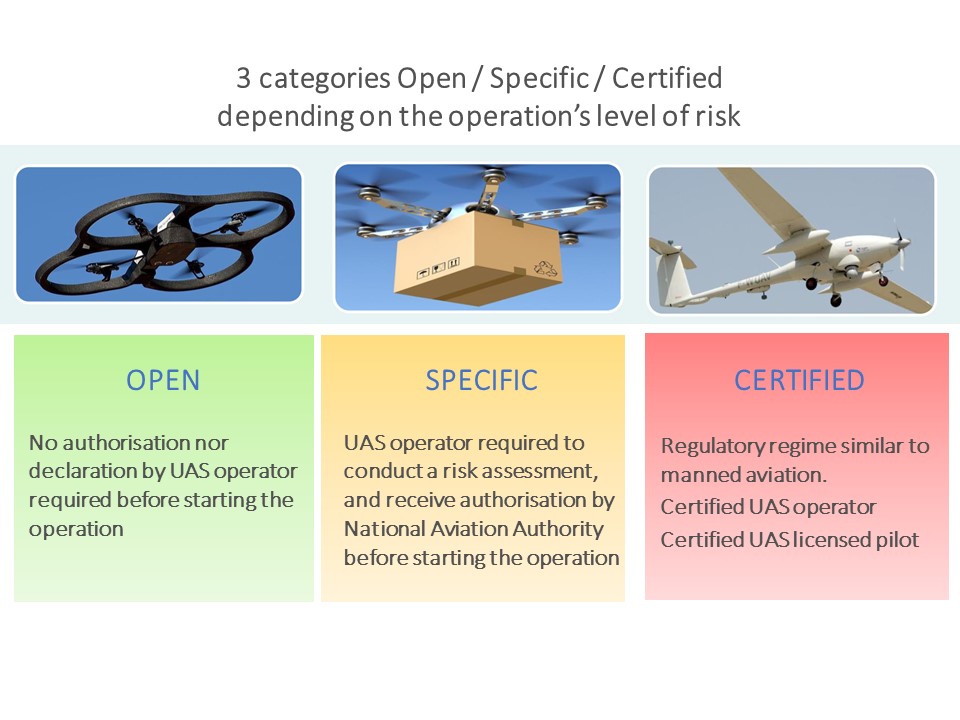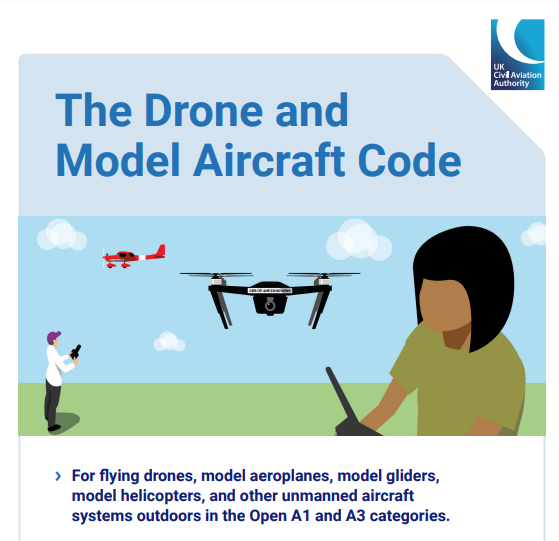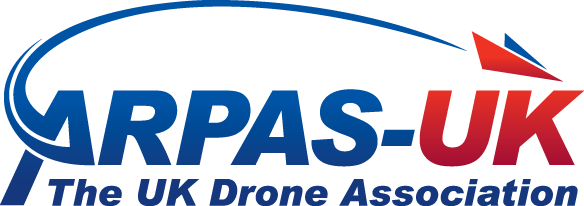Categories of Operations
UAS operations are divided into three operating categories and every flight will fall into one of these, depending on the level of risk. The first and most essential point to address is to determine the category that your flight will be conducted under.

Open category:
- This covers relatively simple operations that present a low risk to other people or property.
- Operations within this category are conducted within a set of basic and pre-defined limitations and do not require any further authorisation by the CAA – though remember that you still need to register first (see section on registration).
- Enforcement is essentially by the police.
The key operational boundaries are as follows:
- Maximum UAS mass of 25kg
- Flight within visual line of sight of the remote pilot VLOS
- Maximum height of 400ft above the closest point of the surface of the earth
- 1 pilot, 1 drone
- Flight Restriction Areas apply (see section on FRZ and airspace restrictions).
Within the Open Category, there are 3 subcategories, referred to as A1, A2, and A3. Depending on the UA mass and the remote pilot competency (just the FlyerID test, or the A2CofC as well), the flight operation’s boundaries in terms of flying closer to uninvolved people vary.

We recommend to review the CAA’s Drone Code . The Code is the starting point for anyone wanting to fly a drone or model aircraft in the UK. It covers everything you need to know to pass the test to get a flyer ID, which always you to fly in the A1 and A3 subcategories.
Additional training certificate, still in the Open Category, the “A2 CofC”, to fly in the A2 subcategory
If you pass the the written theory exam A2 Certificate of Competency (A2 CofC), as well as passing the normal flyer ID online test, you gain additional privileges to fly in the A2 subcategory, meaning primarily that you can fly closer to uninvolved people.
Specific Category
- This covers medium risk operations, or operations that fall outside the strict boundaries of the Open category, but do not present a risk level that would drive a classification in the Certified category.
- The key element of the Specific category is that:
- The UAS Operator MUST hold an Operational Authorisation “OA” issued by the CAA
- The Remote Pilot MUST hold an additional training certificate, called the GVC
- The AMC & GM and the CAP722 Series are the key reference publications (in addition to the law).
The General VLOS Certificate (GVC)
The GVC is a remote pilot competency certificate that satisfies the remote pilot competency requirements for VLOS operations within the Specific category. It is comprised of a theoretical examination and a practical flight test, which are both conducted at a Recognised Assessment Entities “RAE” facility.
PDRA and OSC
Within the Specific category, there are 2 types of Operational Authorisations OA:
- PDRAs, or Pre-defined Risk Assessments, is a shortened set of prescriptive conditions that must be complied with by a UAS operator in order to conduct a pre-determined type of operation. In the UK, there is currently 1 PDRA called PDRA01, in effect the successor to the old PfCO, and governed by CAP722H.
- OAs delivered for operations that do not fit into the boundaries of PDRA01 and require an adhoc approval based on a Operating Safety Case, an OSC.
We estimate that currently ~80% of UAS operators in the specific category operate with a PDRA01, and ~20% conduct more complex missions that do not fit into the boundaries of the PDRA01 and require an OSC.
Certified Category
- This covers operations that present an equivalent risk to that of crewed aviation.
- These operations are consequently subject to the same regulatory regime (certification of aircraft, certification of the UAS operator, licensing of the remote pilot) as crewed aviation.

